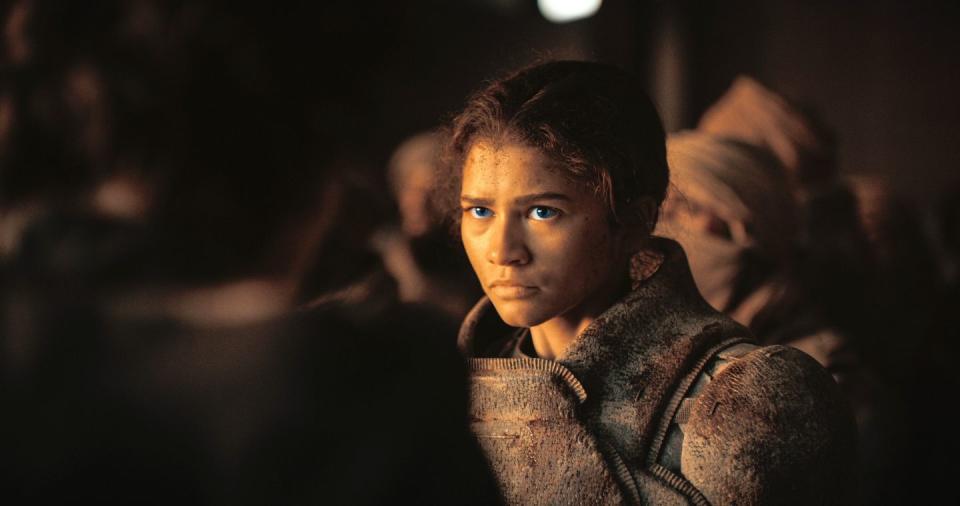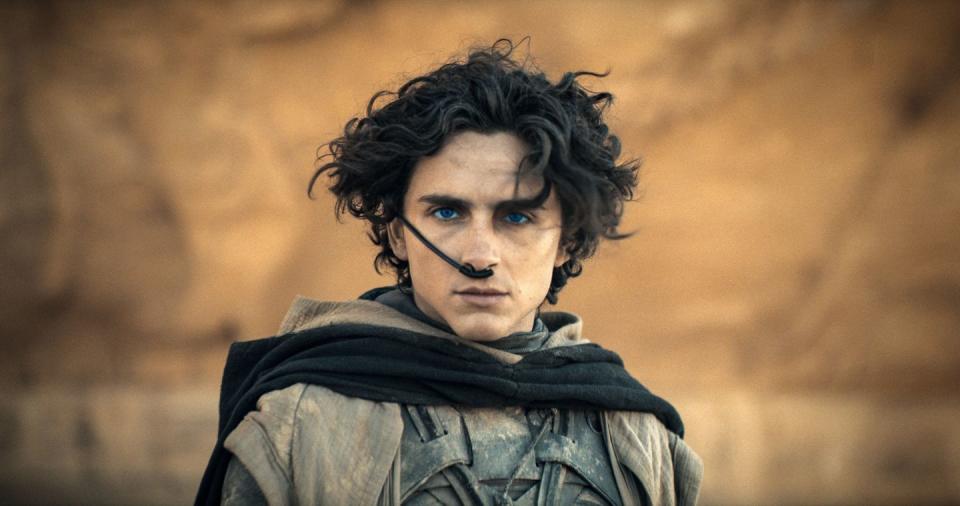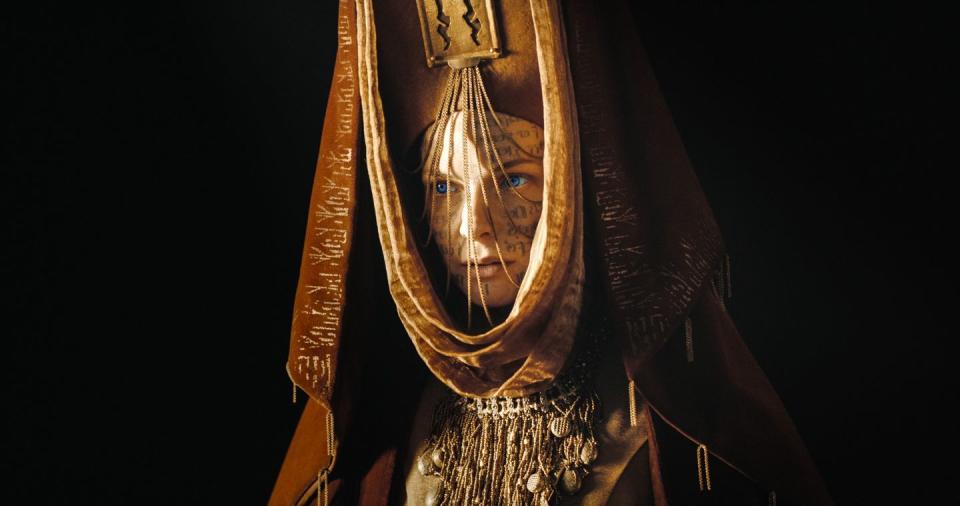If you followed the worldwide press tour for Dune: Part Two, you know there was some serious fashion going on. Zendaya in a Thierry Mugler robot suit from the archives? Anya Taylor-Joy in a sheer Dior hooded veil? Timothée Chalamet in sparkling Haider Ackermann trousers, head-to-toe Prada leather or a Givenchy suit with a custom-made chrome breastplate? The fashion was fashion, to say the least.
The same could be said of the epic space opera sequel itself, now in theaters, which is a masterclass in costume design. Jacqueline West returns for part two (this time without help from a co-creator) and brings back what she calls the film’s “modern” mix of modern and medieval style. West, who has a double degree in art history from Berkeley, described becoming “a kind of Italian scholar” in her research for Denis Villeneuve’s blockbuster, pulling references from Dante’s Inferno to be “dismantled and recreated for 10,000 years in the future. .” Luckily for us, part two delves even deeper into the Dune universe than part one – and the costumes only get richer as it goes.
We caught up with West to get a closer look at how she takes us on the ride through costumes—and what it’s like to dress some of Hollywood’s most fashionable actors today.
How was working on Dune: Part Two different from Part One?
The difference is that the story really evolves and therefore the wardrobe changes. In part two we enter the world of the Emperor, we have new characters such as Princess Irulan, played by Florence Pugh, and Lady Fenring, played by Léa Seydoux. There are many new characters and the worlds are being expanded.
A big change this time is that you worked solo, while for part one you had a co-designer.
I didn’t use a co-designer for this project because I thought part one would be so big that it would take two of us. But for this one I kind of designed it myself, but with a fantastic crew. My dyer came back, my gunmaker came back, my special customers came back, and all my hatters. I had new Hungarian seamstresses and cutter-fitters [because we shot in Budapest]but almost everyone from Part One wanted to come back, which was great.
For many films, designers can source some or all of their costumes through shopping, vintage, working with brands, and so on. But for something like this, I think you have to build everything yourself. How many “things” did you have to create for this film?
I think we made about 4,000 garments. We make masks, we made all kinds of jewelry, we dyed and hand painted all the fabrics, and we even had to rebuild the stillsuits because they took such a hit in part one. But we did buy a lot of pieces – I had customers in Istanbul and Morocco who sent us stuff that we had dismantled and remade over 10,000 years in the future.


The last time we spoke, you called Dune’s costumes “modern” – inspired by medieval costume, but reimagined for 10,000 years in the future. I guess this is still your thesis for part two. Where did that come from?
Well, I have two art history degrees from Berkeley, where I first read Dante. And with the expansions of the antagonist world of Geidi Prime, for example, I watched The Divine Comedy and treated it like I was going through the layers of hell. And Arrakis is like a kind of purgatory. I was completely immersed in medieval art: it is the future, but it starts again. I also relied on old paintings, especially paintings by Arabs in Morocco and North Africa. My references for this movie were pretty old. For example, the Fremen are true desert survivors, so I looked at ancient Islam. They have not adopted the Islamic faith, but we see them dressed as a combination of different religions.
How did Timothée Chalamet’s costumes change for part two?
The main difference from part one is that we see him wearing many more cloaks. Although he still wears his still suit for much of the film, there are different versions of how he is cloaked. In this film he adopts the religion and philosophy of the Fremen, so I wanted to give him this wise, monk-like quality. I wanted to give him this ascetic look, as if it came out of Dante. I mean, I couldn’t let him carry Haider Ackermann, right?


The cast in this movie is so incredible, but I’m really excited to see a lot more of Zendaya than we saw in part one. What’s it like dressing her up?
She looks beautiful in anything you put her in. I kept her wardrobe very simple and transparent so that you can see her shape when she is backlit. That choice was to soften her up and get her out of the still suits. She wears very simple clothes, and Denis and I have talked about this a lot. It’s this idea that when you’re living under a siege, you would have worn a lot of pajamas, but still could have put on your still suit in a pinch.
The other fashion lover we see in this film is Anya Taylor-Joy.
I never met her! That costume was made on the spot.
You never met her! So you just prepare a few things and hope they work out in the end?
It just worked, which was great. I had some notes about her and the character, and I had read the novel, so I came up with something that I thought would fit into that world as a princess, but also as the daughter of a Bene Gesserit.
Has it often happened in your career that you create a costume without meeting the actor?
Maybe twice!


Are stillsuits comfortable?
Yes, I think so! Only one actor complained about his armor – and I won’t say who! But no one complained about their stillsuits. Some actors pointed out that they actually worked. Although the actual costumes do not have a drinking water filtration system as suggested in the story, people said they were never too hot. We used moisture-wicking fabrics on the inside, and there are breathing spaces between the individual pieces of the suit, so when the wind blows in the desert, the actors’ sweat evaporates and cools them down.
Was there something your actors tried to steal from the set?
We all bought very expensive bases, which we had to keep replacing because people kept accidentally wearing them at home! It’s a very normal thing to do: just put on your jacket over your undershirt that you wear all day. I didn’t use silk because I thought they would get too hot in the desert, so we usually used Under Armor because it absorbs moisture.
Those performance base tiers can get pricey once you start multiplying them by a certain number of soldiers, shooting over a certain number of days!
It wasn’t a low-budget film!
This interview has been edited and condensed for clarity.
You might also like it